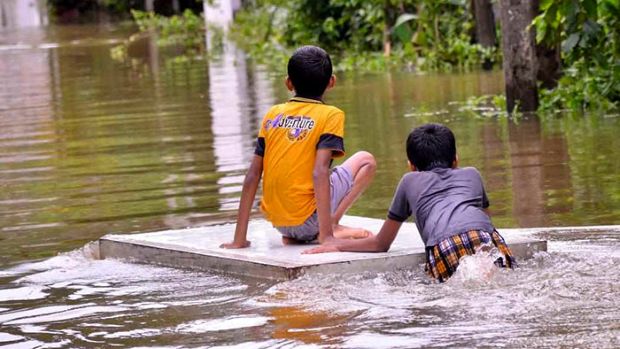Sri Lanka ranked 3rd in South Asia for child displacement due to weather-related disasters
COLOMBO – Sri Lanka ranks among the South Asian countries with the highest absolute number of child displacements linked to weather-related disasters, according to a new report by the United Nations Children’s Fund (UNICEF) South Asia.
The report reveals that India recorded the highest number of child displacements between 2016 and 2022, with 6.9 million children forced to leave their homes due to storms, floods, and other natural hazards. Bangladesh, meanwhile, saw the highest relative impact, with displacements affecting 7.2% of its child population.
Sri Lanka followed closely, with an estimated 4.6% or around 280,000 of its under-18 population displaced over the past seven years. The country recorded an average of 965 child displacements per disaster during this time.
According to the findings, storms accounted for 54% of child displacements, while floods made up 44%. One of the most severe incidents was Tropical Cyclone Roanu in 2016, which brought the heaviest rainfall in over 25 years and displaced around 141,000 Sri Lankan children.
UNICEF noted, however, that many of these displacements were pre-emptive evacuations rather than forced flight after disaster impact, reflecting the success of Sri Lanka’s early warning systems.
“When analyzing regional data, it is crucial to acknowledge that many displacement figures stem from pre-emptive evacuations, particularly in countries with established evacuation procedures and early-warning policies like Bangladesh, India, and Sri Lanka,” the report stated.
While such evacuations do create temporary vulnerabilities, UNICEF emphasized that they have been “highly effective at protecting lives”, with fatalities from natural hazards, especially cyclones, decreasing dramatically since the introduction of preventive measures.
However, the report warned that South Asia remains one of the world’s most climate-vulnerable regions, with millions facing displacement due to rising sea levels, extreme weather events, and other climate-related hazards. Children are among the most affected, facing disruptions to education and healthcare, and heightened exposure to violence, exploitation, and neglect.
UNICEF called on governments, donors, development partners, and the private sector to work together to strengthen child protection, preparedness, and inclusion in climate and disaster policies and actions.
“Amidst these crises, children face considerable risks,” UNICEF said. “Protecting them must be at the heart of climate adaptation and disaster management efforts.”
-ENCL



Comments are closed, but trackbacks and pingbacks are open.